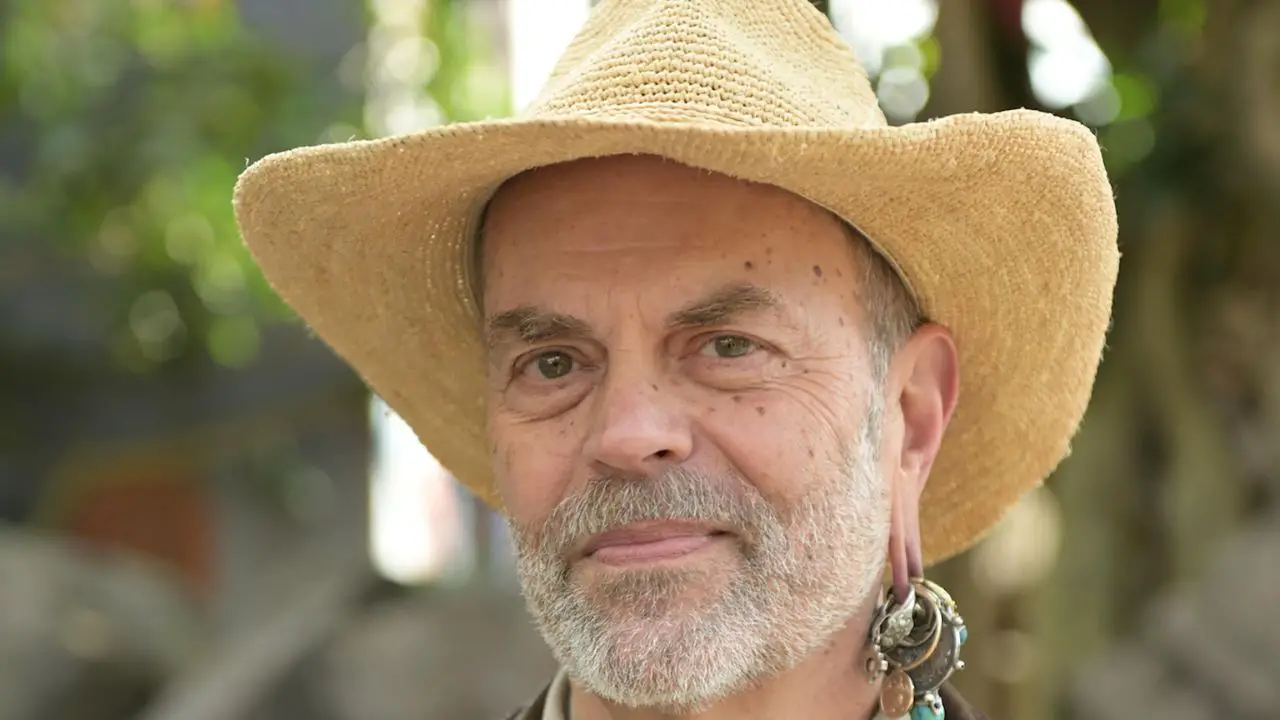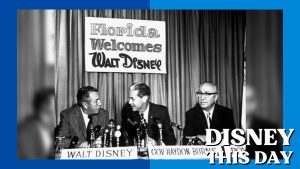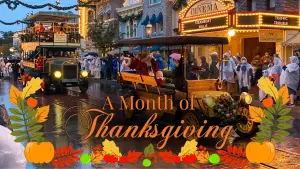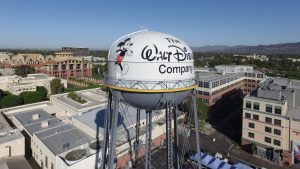On Sunday, August 11, 2024, the newest class of Disney Legends will be inducted during a ceremony at D23: The Ultimate Disney Fan Event. Hosted by Ryan Seacrest, the ceremony will see Colleen Atwood, Angela Bassett, Martha Blanding, James L. Brooks, James Cameron, Jamie Lee Curtis, Miley Cyrus, Steve Ditko, Harrison Ford, Mark Henn, Frank Oz, Kelly Ripa, Joe Rohde, and John Williams all become Disney Legends. This continues a 37-year tradition that is the Disney Legends Award which “honors artists and visionaries throughout The Walt Disney Company’s history who have pushed the envelope of creativity, challenged conventional wisdom, and broken the restraints of the status quo in search of new possibilities and excellence.”
The following interview with incoming Disney Legend Joe Rohde was shared by The Walt Disney Company. Read this and learn about Rohde’s contributions to Disney and also what it means to him to become a Disney Legend.
How does it feel to be honored as a Disney Legend?
Frankly, it was an unexpected honor. All the work we do is done by teams and I always thought of myself as part of a team—kind of the like the team editor. So, it wasn’t top of mind that I was going to be honored in any way. But it is humbling and delightful at the same time to be thought of as an integral part of the history of The Walt Disney Company.
There’d be no Disney’s Animal Kingdom Theme Park without you. Where did the inspiration for that park come from, and how did you turn that dream into a reality?
I think it’s a bit of an overstatement to say that there would be no Disney’s Animal Kingdom without me. It was Michael Eisner‘s idea, and from day one I worked with partners to see it come to life. I think the part that I can take credit for is that I was the chief spokesperson and negotiator for the project, the one who had to do the talking not only to explain it but to enlist supporters, advocates, and advisors.
The day to day of getting Disney’s Animal Kingdom done was a combination of intensive research to support the realism of the park and to learn the rules of the zoological and conservation world. [It required] some invention to create the newer elements, like the Tree of Life and animal habitats, and redirect the design and production skills of Imagineering towards a style that was less fantasy and more photorealistic.
Here is something that was important about the development of the park and that had impact on the rest of my career. We had to overcome two hurdles. One was that people thought they already knew what it would be—just a big zoo—and that this would not work. We needed to reboot that thinking. And more than that, even if we convinced people it could be a theme park, we still needed to contradict many of the rules that made theme parks work.
So, once people understood that it might be something different, the problem was to prove that it was feasible. More than showing that it could be exciting, our chief challenge was proving that it could be done.
That experience bred into me and my teams a strong bias towards presenting all projects not so much as exciting opportunities that might be possible, but as rational investments that were possible and were also exciting… but doable first. Sort of a reduced focus on pure Blue Sky and more like trying to outsmart the analysis so that a proposal could be both rational and surprising at any given moment. Less “Wouldn’t it be cool if…” and more “This makes perfect sense and it’s amazingly cool.”
You were also behind two of the theme park’s most popular expansions with Expedition Everest – Legend of the Forbidden Mountain and Pandora – The World of Avatar. What are some of your fondest memories of working on those two projects?
It’s no secret to those who know me that I love the Himalayas. I’ve been there many times, and would go back in a heartbeat, so working on Expedition Everest was a particularly personal joy. It’s common with projects that some of my fondest memories are from the moments right before we open when the project is nearly complete; [it’s] an entire world unto itself, but not yet up and running, so you can wander through it wandering through your imagination. Everest was like that. Almost every space in that attraction is stunningly realistic, so walking around in it is like walking around in my memory of being in the Himalayas.
One thing that nobody gets to do, and was a great memory, was to be inside the structural interior of the mountain while it was running. It’s a forest of gigantic pieces of steel—massive steel ride track columns and spiderwebs of architectural steel, like some science fiction cathedral. In a way it’s too bad guests can’t see that, because it’s very impressive. Of course, traveling to the Himalayas with the team research trips and on our conservation expedition, Mission Himalayas, was one of the great adventures of my life, from the moment we threw our duffel bags out of a hovering helicopter along the Kali Gandaki River and jumped out onto them to be met by a horse team taking us into the fortified town of Kagbeni, it was my dream come true.
Pandora was another thing altogether. I was terrified of this project when it began, and certain that it would be the disastrous end of my career. It’s a matter of public record that I wrote multiple memos to the company advising them not to acquire the property because it was so impossible to build out of real material in the real world. Then, of course, we had to do it.
It ended up being one of my favorite projects. I very much enjoyed working with the irreplaceable Jon Landau, whom I will miss terribly, and had wonderful long conversations with [Disney Legend] James Cameron, often about stuff that had nothing to do with the project at all—just history, science, and nature.
I have several great memories here. One of them was the day we realized that the robotic shaman figure was capable of a deeper and more convincing psychological performance than we had realized. That led us to redevelop the entire script to take advantage of the remarkable performance quality of this figure. The other moment was one day in the simulator building, long before completion of the attraction, that we realized that Avatar Flight of Passage was going to be a more emotional experience than we had imagined and that we might have something here that was a real game changer, far above the technical achievement of getting it done—something like a real work of art. And lastly, as always, those days before we opened when I could wander around the landscape of Pandora as if it was a real national park of some kind, forgetting that it was all of us who had made it so.
You were instrumental in creating the Disney Conservation Fund, which launched in 1996. How did it come to be, and what are some of your proudest accomplishments?
The Disney Conservation Fund came into existence because it simply had to come into existence if we expected to ever build Disney’s Animal Kingdom. It started as a kind of logical and inevitable proposition: If we wanted to have a legitimate venue that held live wild animals, we would have to be part of a broader national and global effort to protect and conserve those animals, and that would involve creating a conservation fund. This was made clear to us by one of our first advisors, Dr. William Conway, and from the moment that it was clear I closed literally every single executive review with the same caveat, that none of this was possible unless we formed a conservation organization. Once I had acquired some internal advocates, like Judson Green, it became easier to advance the cause.
Well before the park opened, we began forming the actual organization. We wanted to disburse lots of smaller allocations, but mainly to field applications where the funds would go the most good. That is still the case having now given out over $125 million to conservation causes around the world.
You retired as portfolio executive in 2021 after 40 years at Walt Disney Imagineering. Given your varied contributions, how do you want to be remembered?
Most of my career was occupied with projects that did not touch upon fantasy or animated characters. Even before Disney’s Animal Kingdom, my work tended to be focused on exploration of what else Disney could mean. Pleasure Island and The Adventurers Club were just part of years of work on urban entertainment centers. Disney’s Animal Kingdom was an experiment expanding what a theme park could be. [Aulani, A Disney Resort & Spa] was a collaboration with indigenous Hawaiians. Les Villages Nature Paris was a sustainable eco resort. There’s just not a lot of classic IP in my portfolio. If I have a legacy, I suppose it is that… to leave a body of work that shows just how much more and how much else Imagineers are capable of.
And further, I hope that I have established a sense of discipline, deep study, and gravitas to the work. Over the years I have come to believe that what we do is far and away the most complex and technically sophisticated art form in the world. No film, no opera, no theatrical or architectural enterprise comes close. It deserves intellectual sophistication that is equal to its technical sophistication.






